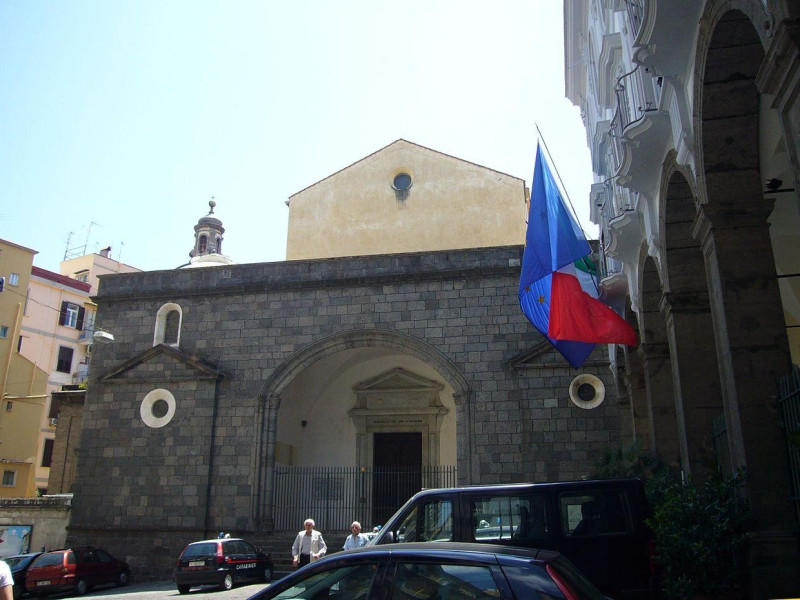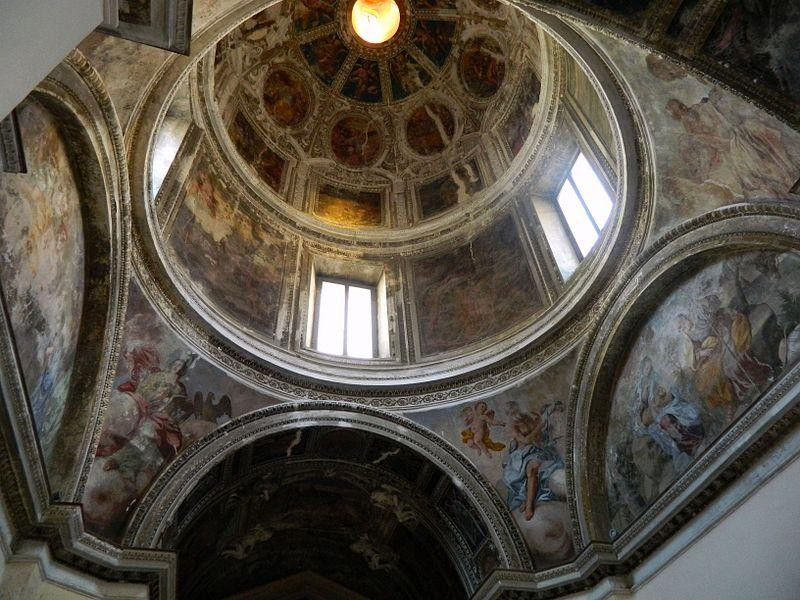Chiesa di Sant'Anna dei Lombardi
It is one of the most important testimonies of the Tuscan Renaissance in Naples. Established in 1411 by Gurello Origlia, the Church shows the close link between the city and Tuscany, proving that even at that time had settled in Naples dense "colony" of Florentine merchants, craftsmen and bankers. In the seventeenth century the building was transformed by Gaetano Sacco. Part of the facade was rebuilt after the Second World War. The facade is composed of an arch in piperno; Gothic atrium is conserved the burial shrine of Domenico Fontana, built in 1627 for the destroyed St. Anne's Church. The interior has a nave with a barrel vault and dome; the chapels are five on each side, plus four more in the presbytery. The high altar was executed on the design by Giovan Domenico Vinaccia da Bartolomeo and Pietro Ghetti. Among the chapels, the Correale, in which they are housed sculptures by Benedetto da Maiano; the Tolosa, work by Giuliano da Maiano with sculptures by Della Robbia and frescoes by Cristoforo Scacco of Verona; and the Piccolomini Chapel, one of the most successful ways of Florentines.




